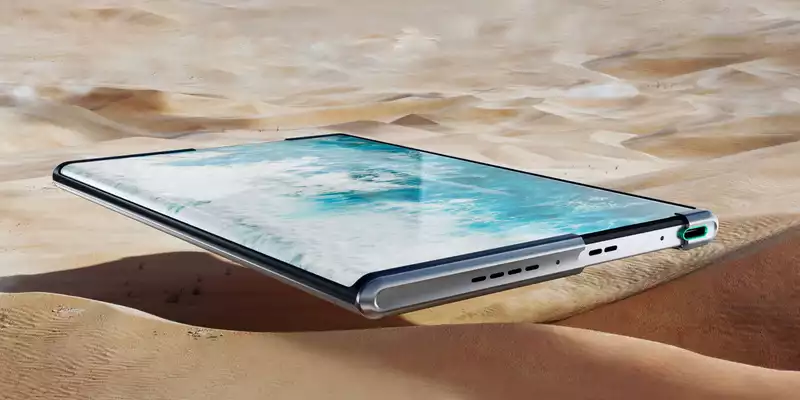Update: Samsung may also be getting into the sliding phone game.
Oppo is showing off a prototype of a new phone with a rollable screen. And while the Oppo X 2021 is impressing those who can handle the new device, don't expect this rollable phone to immediately shake up the competition to make the best foldable phone.
Oppo will be the first to admit that the X 2021 is not ready for primetime. Instead, the Chinese phone maker seems to be trying to create buzz for its rollable phone and show how advanced its rollable concept is when compared to similar devices from other phone makers. However, "farther along" is not the same as "ready very soon."
The rollable phone was not supposed to be this way.
We started in 2021 with LG's CES keynote, where LG promised the device would ship this year, but that was before the Korean electronics giant decided to shut down its cell phone business, including LG Rollable. The only way to get the device now is if you are an LG employee in Korea and take advantage of the company's fire sale pricing.
Oppo certainly seems determined that its rollable phone will not suffer the same fate, and a hands-on by Jon Porter of The Verge speaks in a generally positive tone about the phone's prospects. However, Porter opens his hands-on by noting that the Oppo X 2021 falls far short of the company's own goals for the number of times the rollable display can expand and contract. More importantly, Porter writes, "It is clear that achieving this arbitrary number is far from the only challenge Oppo faces in bringing this device to market."
Like the LG Rollable, the Oppo X 2021 will expand the screen area by rolling out more displays. This is in contrast to the current line of foldable phones, such as Samsung's Galaxy Z Fold 2, which reveals a larger internal display when the device is unfolded.
In the case of the Oppo X 2021, the right side of the device begins to extend outward when the phone's buttons are pressed. This extension turns the Oppo X 2021 from a 6.7-inch phone into a 7.4-inch tablet ideal for viewing photos and videos.
This is the same process that Samsung currently offers with its foldable devices. So what advantages does the Oppo X 2021 bring to the table? From the hands-on demos we have read, Oppo's rollable approach brings three distinct advantages.
No creases: one of the accusations against the first wave of foldable phones is that when the phone is folded in half, there are visible creases in the display. In the case of rollable devices, this is less of a concern because folding is minimized.
Porter noticed a "slight crease" on the left side of the Oppo X 2021's screen, but found that it was barely visible; on phones like the Z Fold 2 and Galaxy Z Flip, the crease is not noticeable, but on phones costing over $1,000 it is a concern. It is noticeable on phones costing more than $1,000.
There are also differences in aspect ratio: the Oppo X 2021's variant takes the screen from a 19.9:9 aspect ratio to something closer to 4:3 in tablet mode; as Porter points out, nothing prevents roller phone manufacturers from stopping the device in any position in between. There is nothing to prevent them from doing so. That way, they can configure the screen to best suit the format of the content being viewed.
Foldable phones offer something similar. Samsung's Flex mode allows the Z Fold 2 or Z Flip to be partially opened, making half of the screen a control panel. However, this is limited compared to the adjustable aspect ratio that a rollable screen can potentially provide.
This is a phone that actually works: while LG may have claimed that the LG Rollable would be ready this year, demonstrations were always limited to on-stage displays carefully controlled by company executives. TCL also showed off a rollable concept phone, but it is not operational; Oppo's phone may still be a concept, but it is a working device that the company is confident enough to hand to journalists.
That does not mean that the Oppo X 2021 and other rollable devices do not face significant hurdles.
The phone appears to be quite bulky: the Oppo X 2021 is 0.42 inches thick. This is considerably thicker than the 0.29-inch iPhone 12 Pro Max and not the slimmest of smartphones. Also, Oppo's rollable phone weighs 9.8 ounces, which is about 7 to 8 ounces for even the best large phones.
While you may be willing to take on extra bulk for a larger screen, it seems that carrying the Oppo X 2021 around as an everyday device may be difficult.
Not yet durable: As mentioned above, Oppo hopes to be able to stretch and shrink this rollable phone 200,000 times. So far, the prototype's durability is about 100,000 times. But ask Samsung how the first Galaxy Fold fared when it made it to release without all the durability issues being resolved.
There is also the question of whether apps will be redesigned to work with Oppo's adjustable display. Such functionality is limited to Oppo's own apps in the current X 2021 concept.
And like folding phone manufacturers, Oppo will have to make the case for a folding phone and why it is a better choice than a traditional design - especially since folding phones are likely to be more expensive. Sure, we're all tired of the candy-bar style phones that have been the norm for over a decade, but for now, this design offers the optimal experience, and Oppo and other rollable phone makers need to establish their case with new devices, no matter how innovative their approach is. .
.









Comments